The University of Utah’s College of Engineering is proud to announce that eight COE faculty members have received this year’s National Science Foundation’s Faculty Early Career Development Program (CAREER) Award, the organization’s most prestigious grant in support of early-career faculty.
This year’s record number of recipients underscores the college’s commitment to seeking out the world’s most dedicated researchers and educators in all engineering fields.
Congratulations to all of this year’s recipients, each of whom will receive grants to pursue their research projects. Following is the list of faculty members who have received this year’s award and a synopsis of each project.
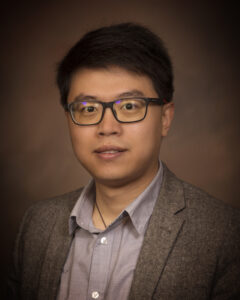 Xianfeng Yang, Civil and Environmental Engineering
Xianfeng Yang, Civil and Environmental Engineering
“Physics Regularized Machine Learning Theory: Modeling Stochastic Traffic Flow Patterns for Smart Mobility Systems”
The goal of this project is to contribute fundamental theories and a set of markedly improved algorithms to traffic flow modeling. Leveraging the concept of physics regularized machine learning, the research could encode both continuous and discretized traffic flow models into Gaussian process for training regularization. This new model can efficiently resolve the common data sparsity and noise issues and facilitate various smart mobility applications. To accommodate streaming data, this project will also develop a novel physics regularized streaming learning framework that can efficiently improve the model performances in real-time. When dealing with big data, this project can further synergize data of different resolutions, fidelities, and sources to enable sparse Gaussian process and Bayesian committee machine for fast learning. This foundational research can enormously promote machine learning applications in smart mobility systems and contribute to formulating sustainable, scalable, and robust traffic flow models. This project will bridge the gap between classical transportation methods and data-driven approaches.
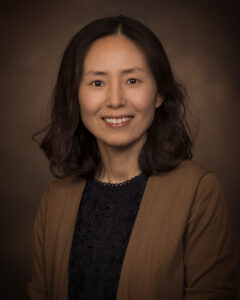 Heayoung Yoon, Electrical and Computer Engineering
Heayoung Yoon, Electrical and Computer Engineering
“Optoelectronic Local Probes Measuring Microstructural Degradation and Recovery Under Accelerated Environmental Stressors”
Defects in semiconductors play a critical role in the performance and stability of modern electronics. The ability to interrogate such defects is therefore of great importance in producing reliable, high-performance electronics that underly the modern economy. Existing methods often measure properties without sufficient resolution to resolve defects on the length scales that they occur. Thus, existing methods provide limited information about the unique local properties. This CAREER project aims to establish an innovative measurement platform that can directly observe the carrier dynamics of microstructured optoelectronic devices. Solar cells based on metal halide perovskites will be the focus of this work. Such devices have remarkable performance, but poor stability, posing a basic challenge for real-world applications. Defect chemistry, ion migration, and microstructural characteristics have all been considered as culprits for the poor stability, but the underlying physical mechanisms are not fully understood. The PI’s research team will use local optical and electrical probes under controlled environmental conditions to study the microstructure of perovskites and elucidate reasons for performance degradation. This fundamental understanding will help to guide the rational design and synthesis of perovskites for robust and reliable solar cells. The PI’s research vision is integrated with an educational plan that aims to generate curiosity and excitement for solar energy and electron microscopy for a broad range of students, with a particular focus on young women students in Utah. The PI will involve undergraduate and graduate students in research and promote the participation of students from underrepresented groups in STEM. An interactive website with streaming videos and educational resources will assist in disseminating the research findings to the general public in the US and abroad.
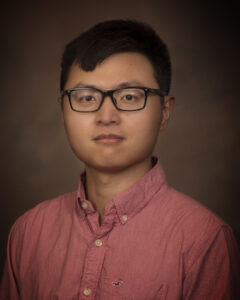 Cunxi Yu, Electrical and Computer Engineering
Cunxi Yu, Electrical and Computer Engineering
“OneSense: One-Rule-for-All Combinatorial Boolean Synthesis via Reinforcement Learning”
This project develops the OneSense system, a graph learning driven reinforcement learning framework for exploring self-learning novel algorithms and heuristics over graphs, with special focuses on graph-based large-scale Boolean optimization problems. The core of the project includes novel reinforcement learning formulations and neural architecture with domain-specific online graph sampling techniques to enable self-learning high-performance graph optimization heuristics. The reinforcement agent with the various reward formulations and novel training methodologies and algorithms will enable effectively learning novel combinatorial optimization heuristics with a wide range of performance customization. OneSense system will be integrated with an open-source end-to-end EDA design space exploration system, which will allow productive exploration and deployment of self-learned optimization heuristics over graphs in Boolean optimization. Moreover, the OneSense reinforcement learning framework will be released to allow exploring self-learned graph optimization algorithms in other research domains and be used as an educational platform.
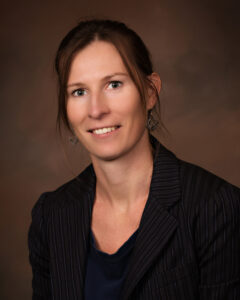 Claire Acevedo, Mechanical Engineering
Claire Acevedo, Mechanical Engineering
“Discovering the Mechanisms Governing Fracture in Fragile Bones”
This project will improve our understanding of the mechanistic origins of fatigue fracture in aged and diabetic fragile bones. This will be achieved by combining low-radiation images of bone damage with mechanical testing of bones and machine learning. This is important because fatigue (cyclic) fracture is a prevalent failure mechanism in nearly all engineered structures, but its relevance to the field of bone tissues has been neglected. These fatigue fractures are common in young athletes, especially in dancers. These fractures are also common in those who have bone fragility. For example, aged and diabetic bones have poor collagen quality and become fragile. Fractures are often thought to be the result of a single overload event, such as a fall. However, this may not explain the cause of all catastrophic fractures because it overlooks the role of fatigue from daily activities. This research project will develop novel dynamic imaging and machine learning for capturing the origins of bone failure mechanisms and associated risk factors. The results will ultimately be used to prevent fragility fractures. This research will provide a transferrable methodological framework for medical imaging, and foster the development of new fracture-resistant materials inspired by biological design principles. The research will be integrated into a long-term educational plan to attract the next generation of female engineers through dance class and other creative learning supports. It is of note that female engineering students in Utah, where this work will be done, are particularly underrepresented in comparison to the rest of the United States.
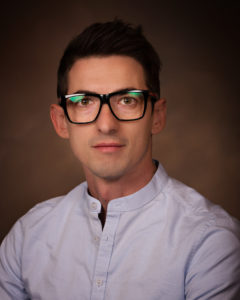 Tommaso Lenzi, Mechanical Engineering
Tommaso Lenzi, Mechanical Engineering
“Bio-inspired Multi-joint Design and Control for Efficient and Lightweight Wearable Robots”
Wearable robots, such as powered exoskeletons, promise to improve our productivity, health, and independence by augmenting, preserving, and restoring our ability to move. However, existing powered exoskeletons are heavy and inefficient, which largely prevents them from being used in real life. Existing powered exoskeletons apply assistance to each wearer’s joint separately, which requires many actuators and large batteries. In contrast, the powered exoskeletons created in this project will use bio-inspired actuation systems that concurrently assist multiple wearer’s joints, much like human muscles. Because one exoskeleton actuator assists multiple wearer’s joints, fewer actuators will be needed. Because energy is transferred between joints instead of being dissipated, smaller and lighter actuators and batteries will be needed. The multidisciplinary research team of roboticists, movement scientists, and clinicians will work closely with individuals with disabilities, broadening the participation of underrepresented groups in research and positively impact engineering education.
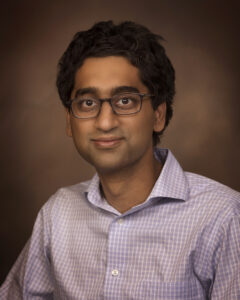 Aditya Bhaskara, School of Computing
Aditya Bhaskara, School of Computing
“AF: Models and Algorithms for Beyond Worst-case Analysis of Learning”
Establishing theoretical guarantees on properties like correctness, convergence rate, robustness, security, privacy, etc. is a central challenge in modern machine learning (ML). Such guarantees are essential for the deployment of machine-learning systems, especially in sensitive domains. While traditional algorithm design strives to obtain guarantees for all instances (worst-case), this is often impossible in ML due to the intrinsic complexity of the underlying problems. This has led researchers to think beyond worst-case analysis, and to study models under which formal guarantees can be obtained. The project aims to make fundamental contributions to this area by considering new problem domains such as the transfer of knowledge across tasks and the leveraging of predictions about inputs in online models of learning. The project also includes activities to help promote undergraduate and graduate research in algorithms design and ML. It also includes outreach activities aimed at students from the local high schools and community colleges.
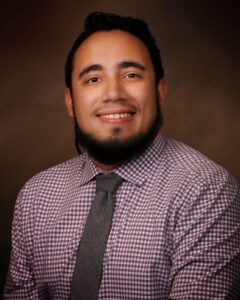 Rogelio Cardona-Rivera, Entertainment Arts and Engineering/School of Computing
Rogelio Cardona-Rivera, Entertainment Arts and Engineering/School of Computing
“Plan-based Simulation of Human Story Understanding”
Storytelling is a fundamental part of the human experience: we tell stories and interpret stories almost daily to share perspectives, teach one another, and communicate between ourselves in more compelling ways. But while narratives are a form of information to which our minds are predisposed, an open question remains: how do people understand stories? By establishing the foundations for a science of narrative that is focused on prediction, this effort aims to afford (to scientists, technologists, and the broader public) the ability to systematically construct stories that resonate with audiences as one intends. This is useful where we already see the use of narrative, when having a higher degree of predictive control in its design would benefit society: the advancement of personalized learning, rehabilitation therapy and healthcare communication, intelligence analysis, automated news generation, and human-aware artificial intelligence (AI). This project outlines a pathway toward using AI planning to generate narratives that predictably elicit a trajectory of mental effects that shape an individual’s story understanding over time across three key cognitive processes that form its basis: event-based mental model updating, inferencing, and memory.
 Shandian Zhe, School of Computing
Shandian Zhe, School of Computing
“Embedding High-Order Interaction Events: Models, Algorithms, and Applications”
High-order interaction events of multiple entities are ubiquitous, ranging from online advertising to commodity recommendation, from neural-signal transduction to gene regulation to disease spreading to international affairs. For example, online shopping behaviors are interaction events between customers, products and selling platforms. This project develops flexible, interpretable, and scalable Bayesian embeddings for massive high-order interaction events, in order to understand a variety of complex relationships between the events and discover the underlying rich patterns. The developed tools can fundamentally promote many important knowledge mining and prediction tasks. Examples include predicting the occurrence of hazardous online transactions to enhance financial security, predicting the outbreak and spreading of pandemic diseases to take effective preventive actions, early warnings of catastrophes, studying when and how rumors propagate through online social media, etc.